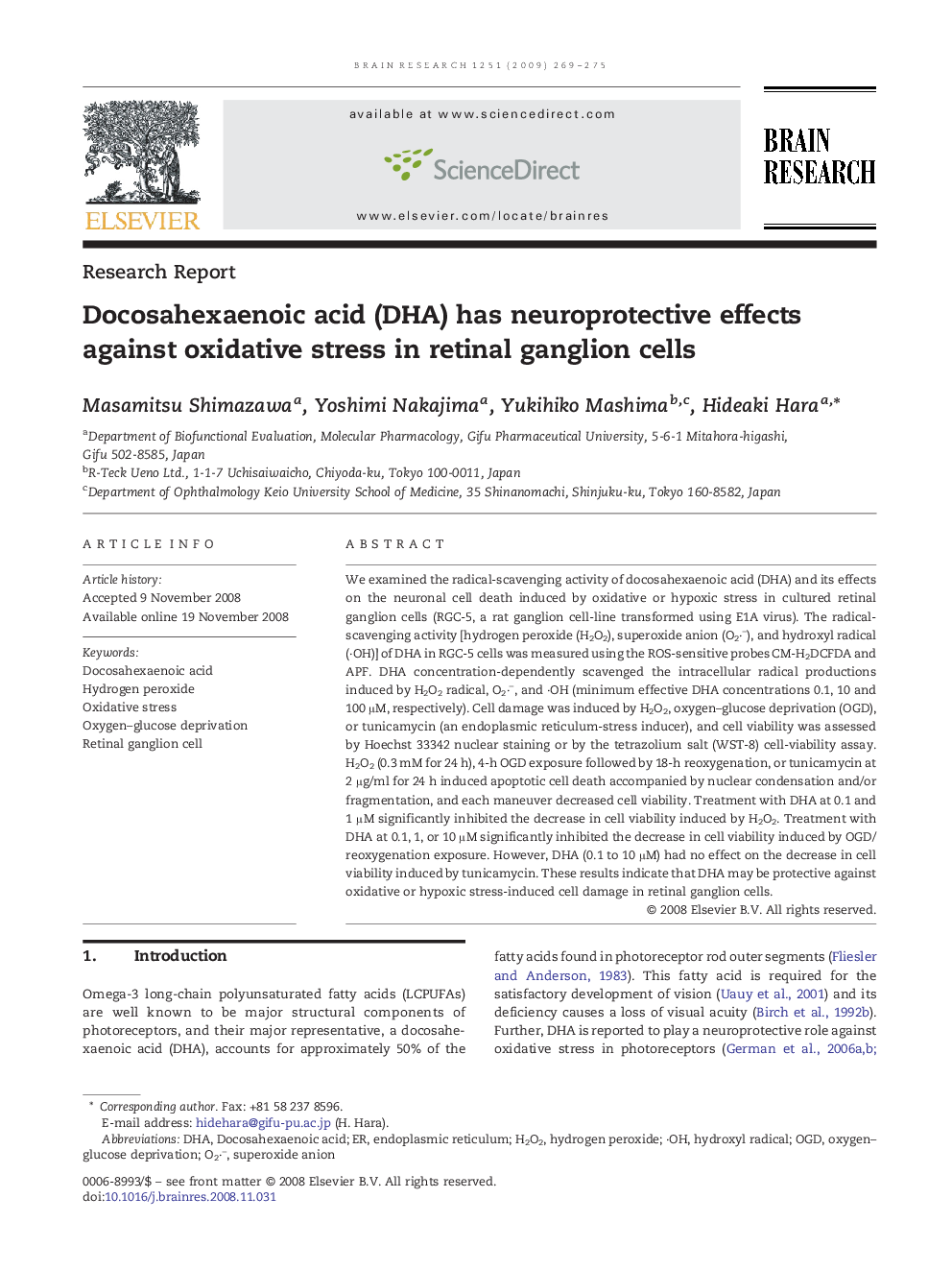| کد مقاله | کد نشریه | سال انتشار | مقاله انگلیسی | نسخه تمام متن |
|---|---|---|---|---|
| 4328697 | 1614188 | 2009 | 7 صفحه PDF | دانلود رایگان |

We examined the radical-scavenging activity of docosahexaenoic acid (DHA) and its effects on the neuronal cell death induced by oxidative or hypoxic stress in cultured retinal ganglion cells (RGC-5, a rat ganglion cell-line transformed using E1A virus). The radical-scavenging activity [hydrogen peroxide (H2O2), superoxide anion (O2·−), and hydroxyl radical (·OH)] of DHA in RGC-5 cells was measured using the ROS-sensitive probes CM-H2DCFDA and APF. DHA concentration-dependently scavenged the intracellular radical productions induced by H2O2 radical, O2·−, and ·OH (minimum effective DHA concentrations 0.1, 10 and 100 μM, respectively). Cell damage was induced by H2O2, oxygen–glucose deprivation (OGD), or tunicamycin (an endoplasmic reticulum-stress inducer), and cell viability was assessed by Hoechst 33342 nuclear staining or by the tetrazolium salt (WST-8) cell-viability assay. H2O2 (0.3 mM for 24 h), 4-h OGD exposure followed by 18-h reoxygenation, or tunicamycin at 2 μg/ml for 24 h induced apoptotic cell death accompanied by nuclear condensation and/or fragmentation, and each maneuver decreased cell viability. Treatment with DHA at 0.1 and 1 μM significantly inhibited the decrease in cell viability induced by H2O2. Treatment with DHA at 0.1, 1, or 10 μM significantly inhibited the decrease in cell viability induced by OGD/reoxygenation exposure. However, DHA (0.1 to 10 μM) had no effect on the decrease in cell viability induced by tunicamycin. These results indicate that DHA may be protective against oxidative or hypoxic stress-induced cell damage in retinal ganglion cells.
Journal: Brain Research - Volume 1251, 28 January 2009, Pages 269–275